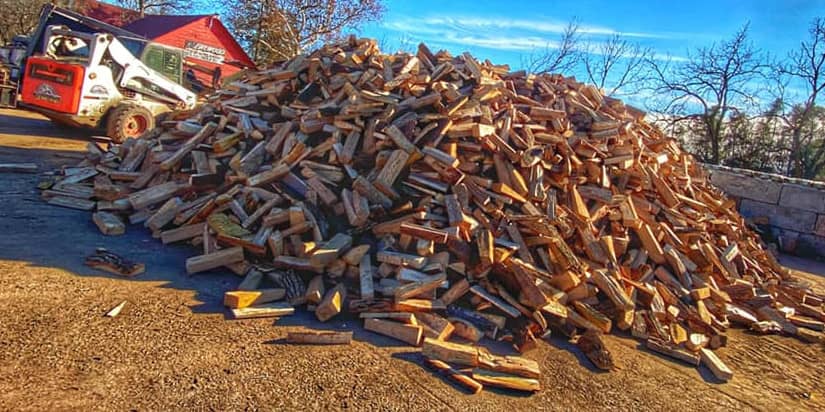When it comes to heating your home with wood, the type of logs you choose can make a significant difference in efficiency, convenience, and overall satisfaction. The two primary options available to consumers are kiln dried logs and seasonal logs (also known as seasoned logs). Understanding the differences between kiln dried logs and seasonal logs will help you make an informed decision that suits your heating needs, budget, and lifestyle.
Understanding the Basics
Kiln dried logs are pieces of wood that have been dried in a controlled industrial kiln environment using heat and airflow to reduce moisture content to optimal levels, typically between 10-20%. This process can take anywhere from several days to a few weeks, depending on the initial moisture content and desired final result.
Seasonal logs, on the other hand, are dried naturally through air exposure over an extended period, usually 12-24 months. This traditional method relies on natural airflow, sunlight, and time to reduce the moisture content from the initial 50-60% found in freshly cut wood down to approximately 20-25%.
Moisture Content: The Critical Factor
The most significant difference between these two types of firewood lies in their moisture content, which directly impacts burning efficiency and heat output. Kiln dried logs consistently achieve lower moisture levels than their naturally seasoned counterparts.
Logs with high moisture content require substantial energy just to evaporate the water before combustion can begin effectively. This means that seasonal logs, despite being dried for extended periods, may still contain enough moisture to reduce their heating efficiency significantly. When you burn wood with high moisture content, you’re essentially paying to heat and evaporate water rather than warming your home.
Kiln dried logs, with their lower and more consistent moisture content, ignite more easily, burn hotter, and produce more usable heat per log. This translates to better value for money and more effective heating for your space.
Burning Performance and Efficiency
The superior drying process of kiln dried logs results in noticeably better burning performance. These logs light more quickly, often requiring less kindling and newspaper to get your fire started. Once burning, they produce cleaner flames with less smoke and minimal creosote buildup in your chimney or flue.
The consistent moisture content also means predictable burning patterns. You can rely on kiln dried logs to perform the same way each time, making it easier to plan your heating schedule and fuel consumption. This consistency is particularly valuable for those who depend on wood burning as their primary heating source.
Seasonal logs, while capable of providing good heat output when properly dried, can be unpredictable. Variations in moisture content between logs mean some may burn efficiently while others struggle to maintain consistent flames. This inconsistency can lead to frustrating experiences, particularly when trying to establish and maintain optimal burning conditions.
Storage and Handling Considerations
One of the most significant advantages of kiln dried logs is their reduced storage requirements and immediate usability. Since they’re already dried to optimal levels, you can use them immediately after purchase without worrying about additional drying time or storage conditions affecting their quality.
Seasonal logs require careful storage management to maintain their condition and continue the drying process if they haven’t reached optimal moisture levels. They need to be stored in well-ventilated areas, protected from rain and ground moisture, yet exposed to airflow. Improper storage can actually increase moisture content, undoing months of natural seasoning.
The compact nature of kiln dried logs, due to their lower moisture content, also means they take up less storage space and are lighter to handle. This makes them particularly appealing for urban dwellers or those with limited storage space.
Cost Analysis: Initial Investment vs Long-term Value
At first glance, kiln dried logs typically cost more per unit than seasonal logs. However, a comprehensive cost analysis reveals that the higher initial investment often provides better overall value.
The superior efficiency of kiln dried logs means you need fewer logs to achieve the same heat output. Combined with their cleaner burning properties, this can result in lower overall fuel costs throughout the heating season. Additionally, the reduced creosote production means less frequent chimney cleaning, saving on maintenance costs.
Seasonal logs may appear more economical initially, but their variable moisture content and potentially lower efficiency can lead to higher consumption rates and increased costs over time.
Environmental Impact and Sustainability
Both kiln dried and seasonal logs can be environmentally friendly when sourced responsibly from sustainable forestry operations. However, the manufacturing process differs significantly in terms of energy consumption and carbon footprint.
Kiln drying requires energy to operate the drying equipment, typically from gas, electricity, or biomass sources. Modern kilns have become increasingly efficient, and many operations now use renewable energy or biomass waste to power their kilns, reducing the environmental impact.
Natural seasoning requires no additional energy input beyond transportation and storage, making it inherently more sustainable from an energy consumption perspective. However, the longer storage requirements and potential for quality degradation can result in higher waste rates.
Choosing the Right Option for Your Needs
The choice between kiln dried and seasonal logs depends on several factors including your heating requirements, budget, storage capabilities, and personal preferences.
Choose kiln dried logs if you:
- Need immediate, reliable fuel without storage concerns
- Want consistent, predictable burning performance
- Have limited storage space
- Prioritize convenience and efficiency over initial cost
- Use wood burning as your primary heating source
- Want to minimize maintenance requirements
Choose seasonal logs if you:
- Have ample, appropriate storage space
- Can plan ahead for your fuel needs
- Prioritize lower upfront costs
- Don’t mind managing storage and potential quality variations
- Use wood burning as supplementary heating
- Enjoy the traditional aspects of wood fuel management
Quality Assurance and Sourcing
When purchasing either type of firewood, quality sourcing is crucial. Look for suppliers who provide moisture content guarantees, use sustainable forestry practices, and offer consistent species selection. Reputable suppliers should be willing to discuss their drying processes, storage methods, and wood sources.
For those seeking premium kiln dried logs with guaranteed quality and consistency, kiln-driedlogs.co.uk offers excellent kiln dried softwood and hardwood logs with transparent moisture content specifications and sustainable sourcing practices. Their commitment to quality ensures you receive logs that perform reliably and efficiently, maximizing your heating investment.
Conclusion
While both kiln dried and seasonal logs have their place in the wood fuel market, kiln dried logs generally offer superior performance, convenience, and long-term value. The controlled drying process ensures consistent quality, optimal moisture content, and reliable burning characteristics that make them the preferred choice for serious wood burners.
The initial higher cost of kiln dried logs is often offset by their superior efficiency, reduced consumption requirements, and lower maintenance needs. For those who value convenience, consistency, and optimal heating performance, kiln dried logs represent the modern evolution of traditional wood fuel, combining the warmth and ambiance of wood burning with the reliability and efficiency that today’s lifestyles demand.

